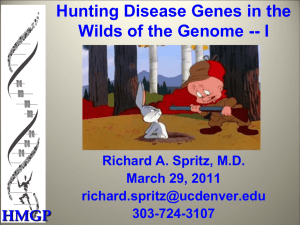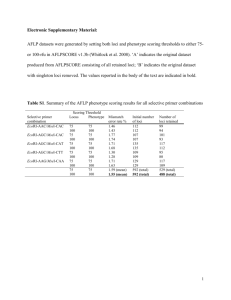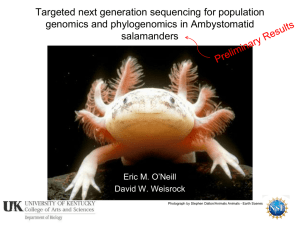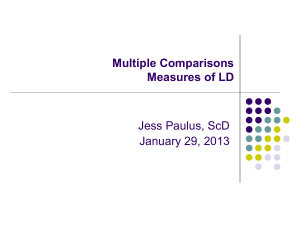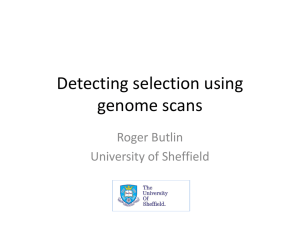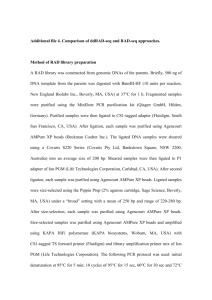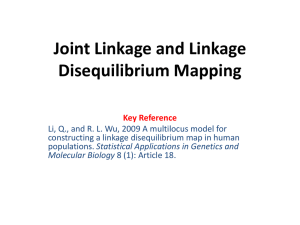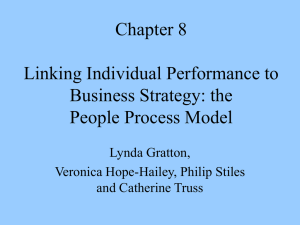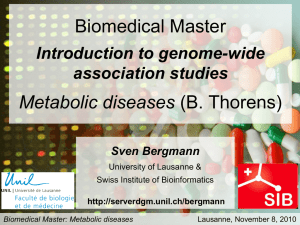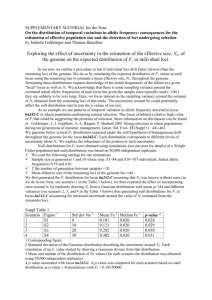mec12284-sup-0012-Supporting information legends
advertisement
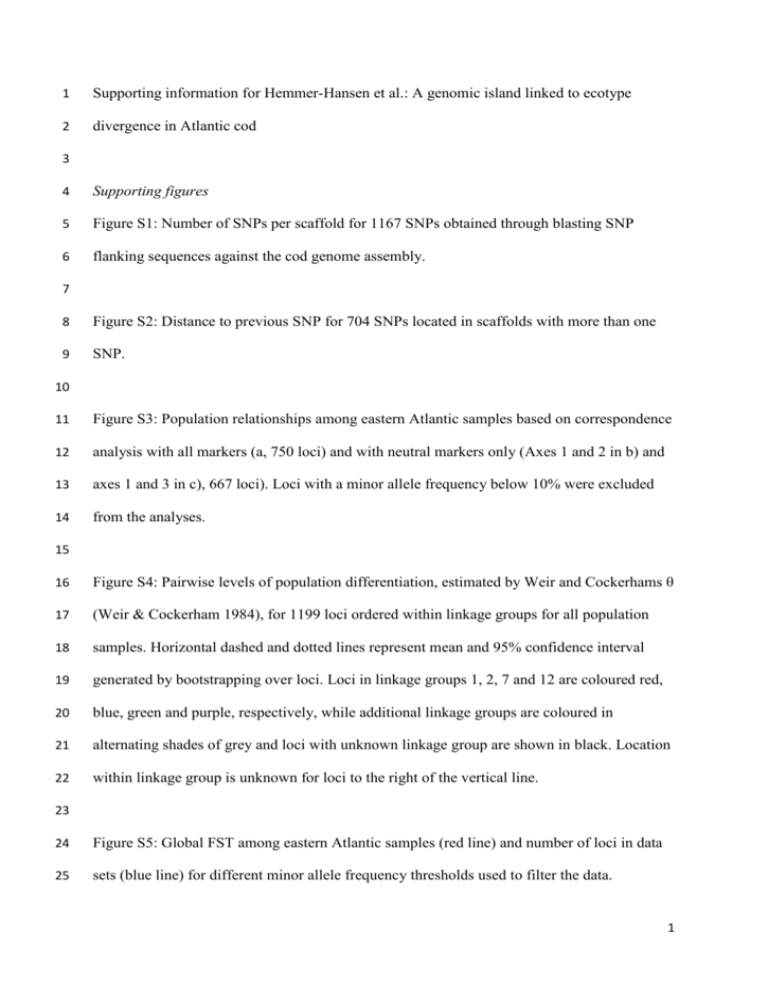
1 Supporting information for Hemmer-Hansen et al.: A genomic island linked to ecotype 2 divergence in Atlantic cod 3 4 Supporting figures 5 Figure S1: Number of SNPs per scaffold for 1167 SNPs obtained through blasting SNP 6 flanking sequences against the cod genome assembly. 7 8 Figure S2: Distance to previous SNP for 704 SNPs located in scaffolds with more than one 9 SNP. 10 11 Figure S3: Population relationships among eastern Atlantic samples based on correspondence 12 analysis with all markers (a, 750 loci) and with neutral markers only (Axes 1 and 2 in b) and 13 axes 1 and 3 in c), 667 loci). Loci with a minor allele frequency below 10% were excluded 14 from the analyses. 15 16 Figure S4: Pairwise levels of population differentiation, estimated by Weir and Cockerhams θ 17 (Weir & Cockerham 1984), for 1199 loci ordered within linkage groups for all population 18 samples. Horizontal dashed and dotted lines represent mean and 95% confidence interval 19 generated by bootstrapping over loci. Loci in linkage groups 1, 2, 7 and 12 are coloured red, 20 blue, green and purple, respectively, while additional linkage groups are coloured in 21 alternating shades of grey and loci with unknown linkage group are shown in black. Location 22 within linkage group is unknown for loci to the right of the vertical line. 23 24 Figure S5: Global FST among eastern Atlantic samples (red line) and number of loci in data 25 sets (blue line) for different minor allele frequency thresholds used to filter the data. 1 26 27 Figure S6: Pairwise levels of population differentiation, estimated by Weir and Cockerhams θ 28 (Weir & Cockerham 1984), for 1113 loci ordered within linkage groups for temporally 29 replicated samples. Horizontal dashed and dotted lines represent mean and 95% confidence 30 interval generated by bootstrapping over loci. Loci in linkage groups 1, 2, 7 and 12 are 31 coloured red, blue, green and purple, respectively, while additional linkage groups are 32 coloured in alternating shades of grey and loci with unknown linkage group are shown in 33 black. Location within linkage group is unknown for loci to the right of the vertical line. 34 35 Figure S7: Observed levels of heterozygosity based on 925 loci, estimated as moving 36 averages within linkage groups for temporally replicated samples, (a) Norway migratory, (b) 37 Norway stationary, (c) North Sea cod and (d) Baltic Sea cod. Vertical dashed line marks the 38 1st percentile over all linkage groups. Estimates for linkage groups 1, 2, 7 and 12 are coloured 39 red, blue, green and purple, respectively, while additional linkage groups are coloured in 40 alternating shades of grey. 41 42 Supporting tables 43 Table S1. Genotyped SNPs with SNPs equence, associated dbSNP reference number, 44 information from the genome alignment and estimates of heterozygosity in each of the eight 45 samples. 46 47 Table S2. Pairwise FST with 95% confidence intervals from 1000 bootstrapped data sets for 48 the full data set (1199 loci, below diagonal) and for a reduced data set where outliers 49 identified through Bayesian regression were removed (1112 loci, above diagonal). 50 2 51 Table S3. Results from Bayesian regression analysis based on 975 loci with minor allele 52 frequency above 2%. Linkage group and position within linkage group are given for each 53 locus. Global FST, posterior probability and Posterior Odds for a model with selection 54 compared to a model without selection were estimated by the programme BAYESCAN. 55 Results were controlled for multiple testing by setting the false discovery rate threshold at 56 5%. Outliers marked with an asterix were not confirmed in an outlier test based on loci with 57 minor allele frequencies above 10%. 58 59 Table S4. Levels of population differentiation (Weir and Cockerhams θ (Weir & Cockerham 60 1984)) between migratory and stationary ecotype samples for 57 loci with known linkage 61 group position in linkage group 1 and outlier status from Bayesian regression analysis. 62 63 64 References 65 Weir B, Cockerham C (1984) Estimating F-Statistics for the Analysis of Population- 66 Structure. Evolution, 38, 1358-1370. 3

